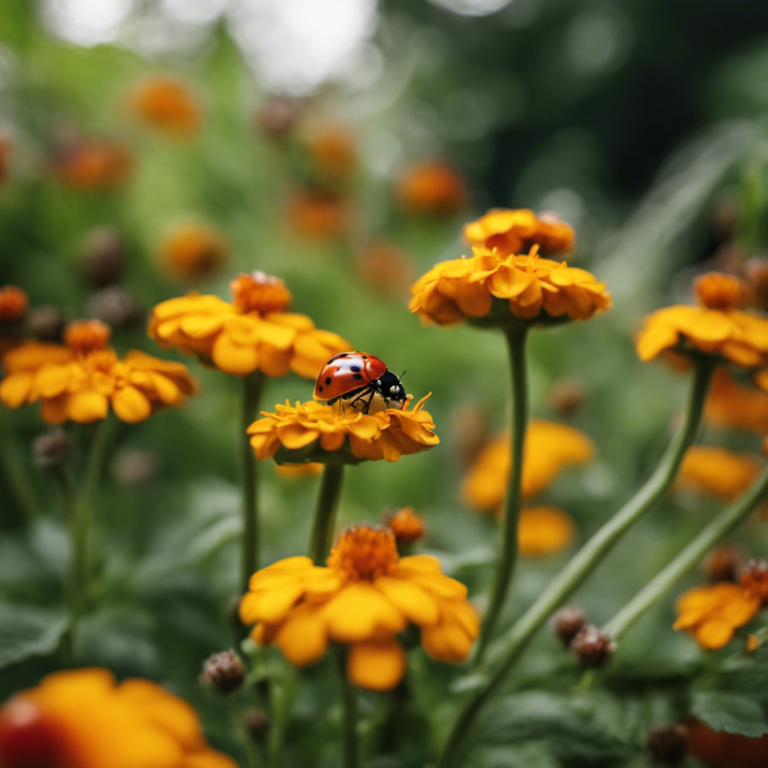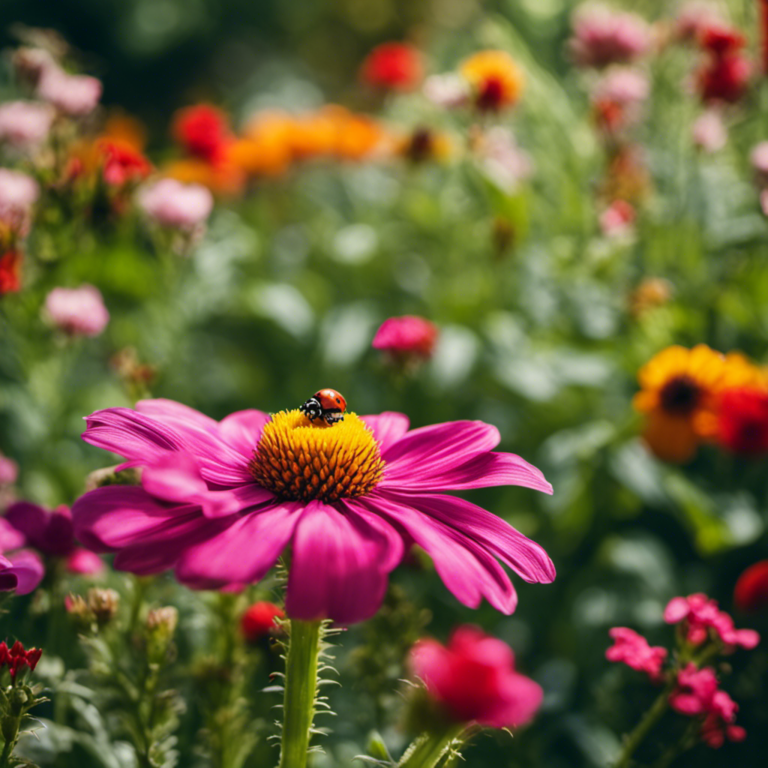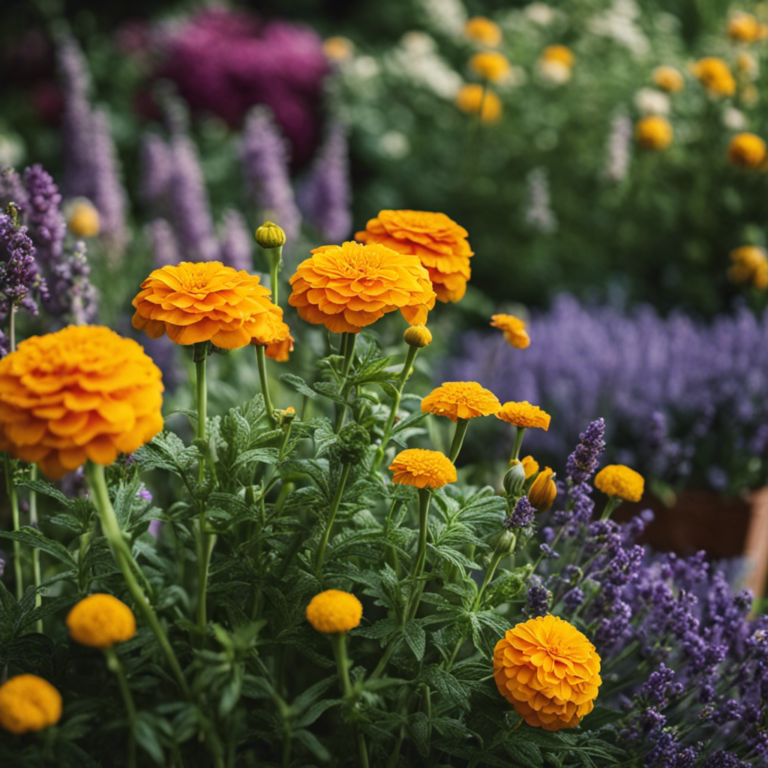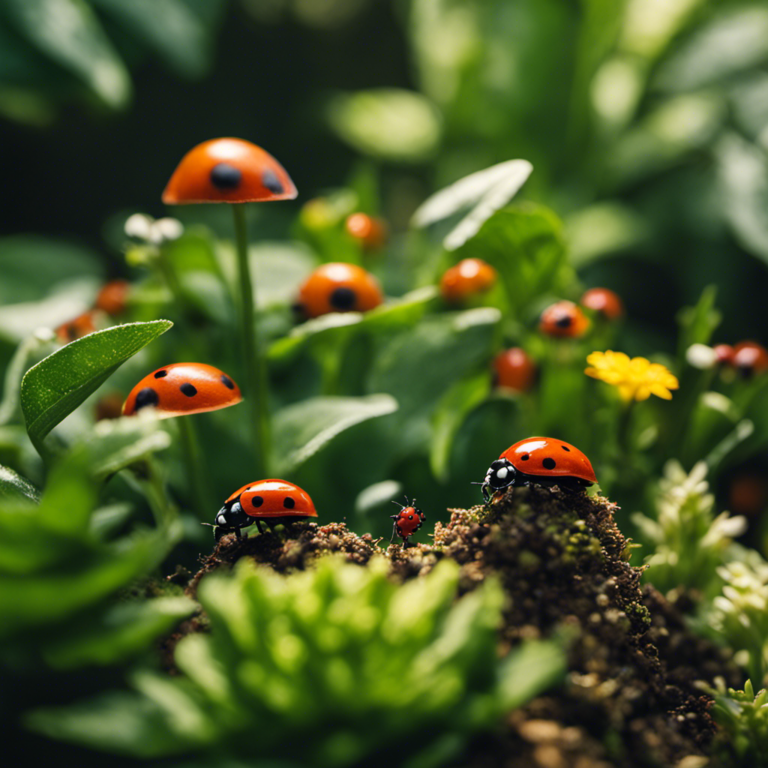Are pests causing damage to your farm? Looking for eco-friendly methods to control them? You’re in the right place!
This article will guide you on how to implement green pest control in farming. By utilizing natural repellents, biological control, crop rotation, companion planting, and physical barriers, you can effectively manage pests without harming the environment.
Get ready to safeguard your crops and promote sustainability in your farming practices. Let’s explore the methods together!
Key Takeaways
Implementing eco-friendly pest control methods in farming is a practical and effective approach to reducing the use of harmful chemicals and safeguarding the environment. By utilizing natural repellents, biological control, crop rotation, companion planting, and physical barriers, farmers can successfully manage pests while minimizing their negative impact on the ecosystem.
It is important, however, to conduct further research to fully understand the efficacy of these methods and their long-term effects on crop production and pest populations. This will allow farmers to make informed decisions and optimize their pest control strategies in a sustainable and environmentally friendly manner.
Natural Repellents

To effectively implement environmentally-friendly pest control in agriculture, you can utilize natural repellents. These organic alternatives provide a practical solution for managing pests without causing harm to the environment or your crops’ health.
Natural repellents work by deterring pests from your farm, making it less appealing for them to inhabit and reproduce. One effective approach is planting pest-resistant varieties. These crops have been genetically modified to naturally repel pests, reducing the need for chemical pesticides. For instance, certain types of corn and soybeans have been engineered to produce proteins that are toxic to specific pests.
Another option is using natural repellent sprays derived from plant extracts like neem oil or garlic. These sprays create a protective barrier that repels pests and can be directly applied to the plants.
Biological Control

Biological Control in Sustainable Farming
To effectively manage pests in an environmentally-friendly manner, it’s important to incorporate biological control methods into your farming practices. Biological control is a crucial component of integrated pest management (IPM), which aims to minimize pesticide use and promote sustainable agriculture.
By implementing the following four aspects of biological control on your farm, you can achieve effective pest management while reducing reliance on synthetic pesticides:
-
Beneficial insects: One way to control pest populations is by introducing or attracting natural predators and parasites that feed on them. Ladybugs, lacewings, and parasitic wasps are examples of beneficial insects that can help control pests by either feeding on them or laying eggs inside their bodies.
-
Microorganisms: Utilizing beneficial microorganisms like nematodes and bacteria can target specific pests without harming other beneficial organisms or the environment. These microorganisms infect and kill pests, providing an effective and eco-friendly solution.
-
Biopesticides: Biopesticides, derived from living organisms, can be applied to control pests. These biopesticides can include bacteria, fungi, viruses, or their byproducts. They’re effective against a wide range of pests while having minimal impact on non-target organisms.
-
Habitat manipulation: Creating suitable habitats for beneficial organisms is another important aspect of biological control. By providing food, water, and shelter, you can attract beneficial insects and promote natural pest control. Planting diverse flowering plants, establishing hedgerows, or using cover crops are some ways to enhance biodiversity on your farm.
Incorporating these biological control methods not only helps manage pests effectively but also promotes sustainable farming practices by reducing the use of synthetic pesticides. By taking a proactive approach to pest management, farmers can achieve a balance between pest control and environmental stewardship.
Remember, sustainable agriculture is the key to a healthier and more resilient farming system.
[QUOTE]: ‘Biological control offers farmers a sustainable and eco-friendly approach to pest management, reducing reliance on synthetic pesticides and promoting a healthier farming system.’
Crop Rotation

Crop rotation is a beneficial practice for managing pests and promoting sustainable farming. It involves planting different crops in a specific order over multiple growing seasons. This helps break the pest life cycle, reducing their ability to reproduce and keeping their populations in check.
Additionally, crop rotation improves soil fertility by alternating between crops with different nutrient requirements. For example, planting legumes can increase soil nitrogen levels, which benefits subsequent crops.
Another advantage of crop rotation is that it helps prevent the buildup of pest resistance. When pests are constantly exposed to the same crops, they can develop resistance to pesticides, making them harder to control. By diversifying your crops, you can reduce the need for chemical pesticides and ensure long-term pest management.
Companion Planting
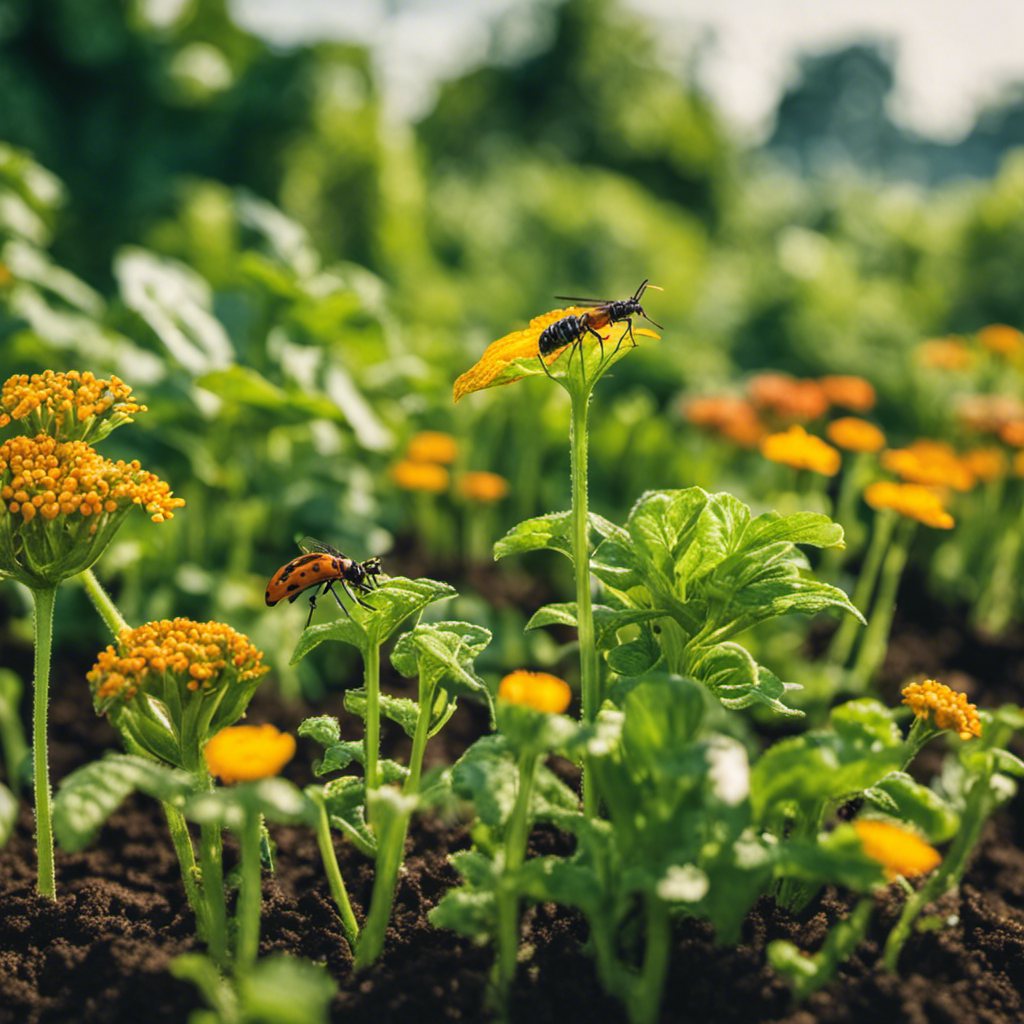
Companion Planting: A Sustainable Pest Control Strategy
When it comes to green pest control in farming, one effective strategy to consider is companion planting. This practice involves intercropping different plants together to create a mutually beneficial environment. Not only does companion planting help manage pests, but it also promotes sustainable agriculture.
Let’s explore four key benefits of this technique:
-
Natural Pest Control: Certain plants release natural compounds that repel pests, reducing the reliance on chemical pesticides. For example, marigolds emit a scent that repels aphids and nematodes. By incorporating these plants into the farming system, farmers can effectively minimize pest damage.
-
Attraction of Beneficial Insects: Companion planting can also attract predatory insects that feed on pests. For instance, planting dill and fennel can attract ladybugs, which are natural predators of aphids. This natural pest control method helps maintain a balanced ecosystem within the farm.
-
Soil Health and Nutrient Cycling: Companion plants with different root structures and nutrient requirements can improve soil health and nutrient availability. Legumes, such as peas and beans, have the ability to fix nitrogen in the soil, benefiting neighboring plants. This nutrient cycling process enhances the overall fertility of the farm.
-
Enhanced Pollination: Another advantage of companion planting is improved pollination. Planting flowering companions like sunflowers or lavender can attract pollinators such as bees and butterflies. These pollinators play a crucial role in transferring pollen between plants, leading to better crop yields.
By incorporating companion planting techniques, farmers can minimize pest damage, reduce the use of chemical inputs, and foster a more sustainable and resilient farming system. As we strive for a greener and healthier future, companion planting stands as a valuable tool in sustainable agriculture.
[Custom Quote]: ‘Companion planting allows us to work in harmony with nature, harnessing its power to create a balanced and resilient farming system.’ – [Your Name]
Physical Barriers
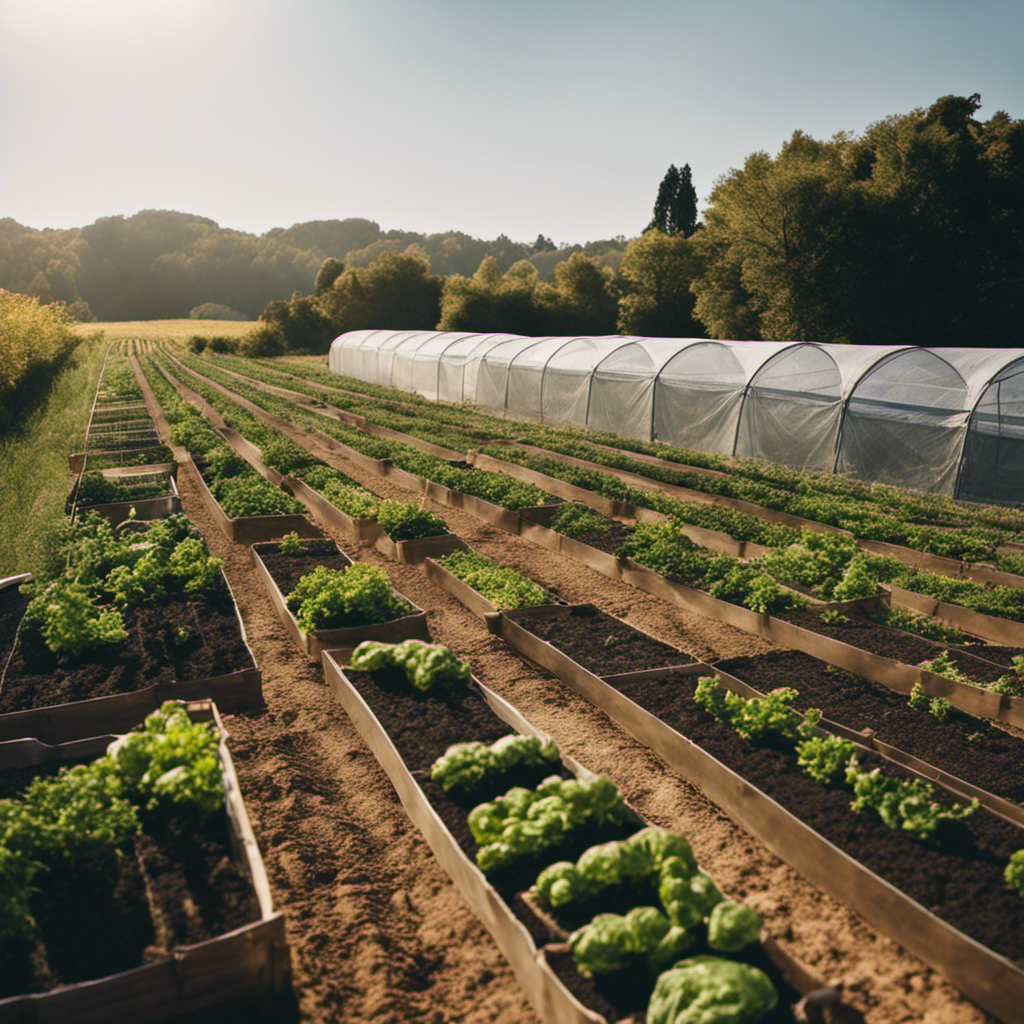
One effective way to implement environmentally friendly pest control in farming is by using physical barriers to prevent pest infestations. Physical barriers serve as a protective shield that blocks pests from entering the farm and damaging crops. These barriers can take the form of fences, nets, or row covers.
It’s important to construct sturdy and well-installed physical barriers to effectively deter pests. Additionally, incorporating vertical gardening techniques can enhance the effectiveness of physical barriers by utilizing vertical space and reducing the ground area where pests can access crops.
Using organic fertilizers alongside physical barriers is also crucial as it promotes healthy plant growth and naturally deters pests. By employing physical barriers, vertical gardening, and organic fertilizers, farmers can protect their crops while reducing the need for harmful pesticides.
Conclusion
Employing green pest control methods in farming is a practical and effective way to reduce the use of harmful chemicals and protect the environment. By using natural repellents, biological control, crop rotation, companion planting, and physical barriers, farmers can effectively manage pests while minimizing the negative impact on the ecosystem.
However, it’s important to conduct further research to fully understand the effectiveness of these methods and their long-term effects on crop production and pest populations.

